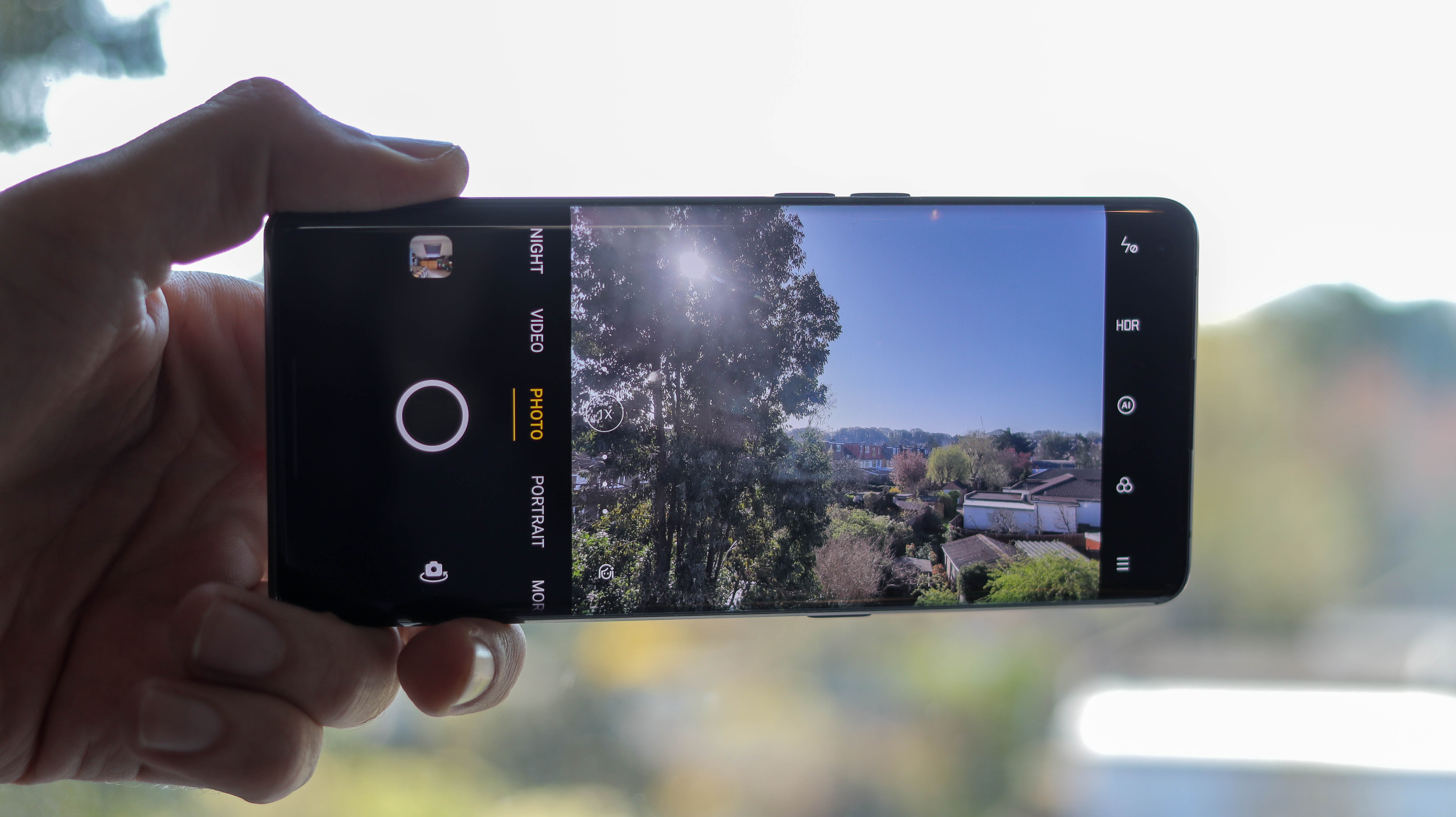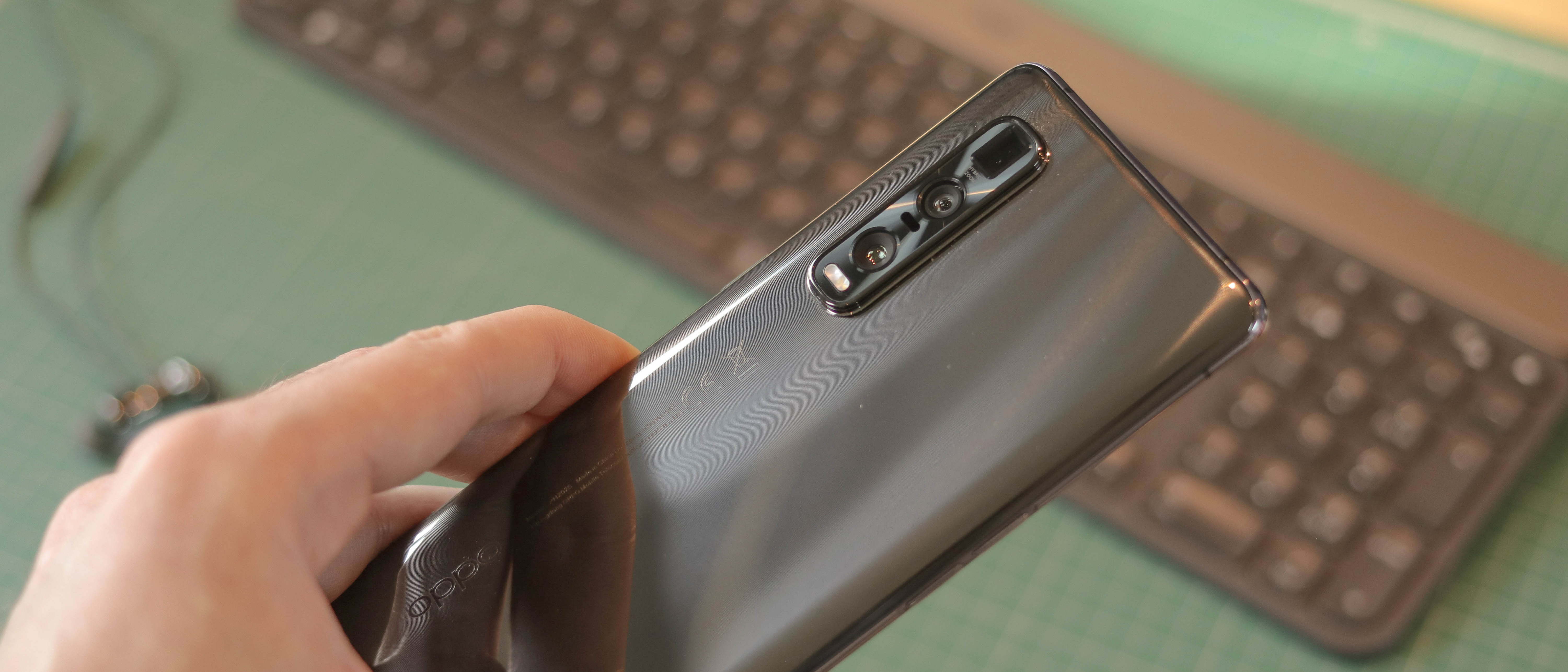Digital Camera World Verdict
With more storage, faster charging and a better zoom than the Galaxy S20 Plus or iPhone 11 Pro, the Oppo Find X2 Pro is a smartphone champ. At £1,099 in the UK (US release TBC) it’s also one of the most expensive phones around, and many will have issues paying over a grand for a phone that isn’t made by Apple. That aside, if you want a killer screen, a stellar camera that grabs realistic shots with tapered saturation, plenty of zoom, storage and the zippiest charging on any flagship phone right now, you really can’t go wrong here.
Pros
- +
Excellent camera
- +
Class-leading charging
- +
5G as standard
Cons
- -
No wireless charging
- -
Very expensive
- -
No headphone jack
Why you can trust Digital Camera World
The Oppo Find X2 Pro is a blowaway camera phone, though Oppo itself is a brand that's still unknown to many people. However, while Oppo may seem like it came out of nowhere, it’s had a longer history of churning out tech than you might think.
Audiophiles may have over a decade of Oppo exposure under their belts, reading about the Chinese brand’s premium headphones and sound equipment. Even before it started dropping phones in the UK, debuting with its impressive Oppo Reno 10x Zoom in summer 2019, it’s been selling smartphones in China for years.
Oppo is also part of the same parent company as OnePlus and Realme – two brands that are incredibly well respected by enthusiasts with an eye for value. That said, the Find X2 Pro – the company's latest flagship – is definitely not a contender for best budget camera phone.
Costing £1,099 ($1,292 / AU$2,188), not only is it the most expensive phone that Oppo has yet launched (the Reno 10x Zoom was £699 when announced), it’s even pricier than an iPhone 11 Pro! Surely not.
Scan across the spec sheet and a few things jump out, though – such as the 512GB storage. That’s four times the capacity found in the iPhone 11 Pro and the Samsung Galaxy S20 Ultra base models. Then there’s that fast battery charging at 65W, which soars from 0-100% in just 38 minutes.
Finally, with a 120Hz refresh rate screen and a fancy visual engine that makes the Find X2 Pro an upscaling whizz (capable of turning standard dynamic range and 30fps footage into almost HDR, high frame-rate fodder) it looks like an across-the-board winner.
The fact that Oppo bagged exclusive dibs on Sony’s new 48MP sensor is a huge deal, too, and the triple camera loaded up with a periscope zoom promises performance worthy of the best camera phones on paper – and with 5G as standard, it's also poised to take the crown for best 5G phone. So, what has it been like after a full test in the real world?
• Pre-order the Oppo Find X2 Pro here

Specifications & shooting modes
With three cameras around the back, spearheaded by a 48MP main sensor paired with an f/1.7 lens, at first glance you would be forgiven for thinking that the Find X2 Pro’s setup wasn’t anything special – but, oh boy, would you be wrong.
The Oppo Find X2 Pro features a 12-bit IMX689 sensor from Sony, and this thing is box-fresh and likely to be the sensor to watch in 2020. With its large 1/1.4” size, 48MP resolution and 1.12-micron pixels, its light-capturing capabilities are fair even without factoring in its pixel binning party trick. That said, if you do, and snap 12MP resolution images (combining four pixels into one ‘superpixel’), the combined pixels result in a 2.24-micron pixel size, which is excellent.
This isn’t just any smartphone camera setup, though, so there’s a fair bit more detail we can go into. First up, the Find X2 Pro features All Pixel Omni-directional PDA. While traditional camera phones employ just 3% of their pixels to do the focusing, this one engages 100% of them.
Additionally, the 13MP periscope camera features a 10x hybrid zoom and a 60x digital zoom. Oppo doesn’t disclose the periscope camera’s focal length on this thing, so we can’t say exactly how it stacks up to the Galaxy S20 Ultra from a specs point of view - but keep reading for real-world findings.
Add to the mix a sky high-resolution 48MP ultra-wide camera, powered by an IMX586 sensor and an f/2.32 lens, and the stage is set for some great imaging.
Thankfully, Oppo doesn’t drop the ball from a software point of view for the most part. For starters, there are plenty of shooting modes. These include Video, Photo, and Portrait which occupy the bottom bar for quick access. Additional modes include Night, Pano, Expert, Time-lapse, Text Scanner and Slo-Mo – available through an expanded menu.
The phone’s expert mode supports control over ISO up to 6400 and a shutter speed of up to 32 seconds. Additionally, it also opens up 12-bit RAW capture, which is a novelty on mobiles.

Key features
Images have a refreshingly natural finish to them – no over the top zing, and contrast is held back too (in a good way). In turn, the Find X2 Pro’s images should please fans of more neutral shots that leave wiggle room for edits.
Focus is fast and accurate, though in low light anything but a steady hand can result in a softer shot than the finest phones from Apple and Huawei. Still, that shouldn’t put you off as results can look very good in plain automatic mode across lighting conditions.
The phone’s long-exposure, handheld low light capture night mode steps up a level compared to older Oppo phones. It almost matches the best out there – even if it isn’t quite Pixel 4 astrophotography good, grabbing natural, bright images even in the dimmest scenes.
Dynamic range is also solid. There’s an auto HDR feature that you can activate, which ensures even backlit objects are detail-rich. Once again, there’s a subtle emphasis placed on a natural look, with HDR photos free from extreme textures.
Depth of field is also beautifully on the mark for a smartphone. Whether you’re shooting a photo of a stick of lip balm or a portrait, the softened background is usually rich and realistic, and this relatively shallow depth extends to the telephoto camera too.

If you want the maximum zoom possible, then the Find X2 isn’t for you – the Galaxy S20 Ultra wins out on that front. The Find X2 betters the iPhone 11 Pro and Samsung Galaxy S20 Plus, though, making it amongst the best zoom you can get for the price. Clocking in at a roughly 5x optical zoom, it’s pretty standard fare for a periscope camera in 2020. What’s great about the Find X2 Pro, however, is that image quality across focal lengths stays strong.
The ultra-wide camera stacks up very well too. Loaded up with autofocus and macro capabilities, just like the OnePlus 7T and OnePlus 7T Pro, it can stay sharp as close as 2.5cm, and in good light, the results are high on impact.
There’s also a bump in video capture. The Ultra Steady Video, introduced on the Oppo Reno 2, now uses the ultra-wide lens, so it doesn’t crop into the frame - and it looks mighty. Unlike the Reno 10 X Zoom, video can also be shot across all three cameras, and the Find X2 Pro also captures 10-bit HDR video, with a maximum recording resolution of 4K at 60fps.
Also worth noting, the punch hole selfie camera impresses with its 32MP resolution and the clear images it shoots. Better still, Night Mode extends to the front camera too, so even in low light, clear shots needn’t be a pipe dream.

Design and handling
The Oppo Find X2 Pro weighs 198g if you pick it up in vegan leather or 207g in its ceramic variant. Colors include black and orange, and the combination of glass and metal feel fantastic in hand. This means it’s a heftier phone than most, though its curves make sure it still feels elegant.
Its USB-C port at the base is also special; plug in an Oppo SuperVooc 2.0 charger with 65W speeds and the Find X2 Pro powers up to 100% (4,260mAh) in 38 minutes, blasting the Galaxy S20’s 25W charging out of the water. There’s no wireless charging – so it isn’t quite a master of all trades, though, on the plus, it does see you through a full day which is great going.
The Find X2 Pro’s connections are also future-focused. There’s 5G as standard, with no 4G versions available. It’s powered by a Snapdragon 865 chipset, making it among the most powerful smartphones you can buy, and that’s combined with 512GB storage, 12GB PLDDR5 RAM, and WiFi 6. This makes it a winner in our eyes.
While the Galaxy S20 series runs with Samsung’s Exynos chips in everywhere other than the US, the Find X2’s Snapdragon processor performs better in the real world when it comes to heat management and seems to do a great job of battery like. Additionally, most flagship phones today ship with 128GB storage; the Find X2 packs four times that capacity. This should make potential Samsung customers seriously take note of what Oppo's doing here.
Running with Color OS 7.1, which is Oppo’s custom interface atop Android 10, app support is also on-par with the best Android devices around. This means that unlike Huawei’s new devices, Oppo’s Find X2 Pro supports unbridled Google services.
While we didn’t love Oppo’s interface on the Reno 10x Zoom, it was stripped back for the Oppo Reno 2 – and Oppo seems to have cleaned things up a bit more this time around as well. It’s clean, responsive, and swiping through it on that 120Hz screen is a beautiful thing.
Display
We wouldn’t normally carve out a separate section for a phone screen on this site, but the Ultra Vision panel on the Find X2 Pro is a treat. With a 19.8:9 aspect ratio it’s tall, and measuring 6.78-inches it delivers ample size. Photos look stunning on it and it makes for a sensational viewfinder, indoors or out. The Find X2 Pro is also beautifully bright at 800 nits (which climbs to 1,200 nits in direct sunlight).
In addition to the smooth 120Hz refresh rate, Oppo has loaded up a 240Hz Touch Sample Rate, which means that touch reactions are fast, taking response times from 7.4ms down to 4.2ms. As for resolution, there’s sharp, QHD AMOLED tech at work here; and it’s iPhone-beatingly crisp. Combined with True Billion Color Display (10-bit), and pro-grade color calibration, the phone has also received an A+ top-tier rating from DisplayMate.
Oppo doesn’t stop there. It has also included a dedicated image engine, O1 Ultra Vision, which comes loaded with features like Clear Video Motion Compensation for smoother playback, HDR Video Enhancer, upscaling content and HDR 10+ support. Amazon, Netflix, and YouTube are also supported by the engine, so this isn’t just a hot air spec that you’ll never use.

Verdict
The Oppo Find X2 Pro is a very expensive phone that’s going to be a dream for underdog fans who want a seriously fancy flagship. The £1,099 asking price is eye-watering but, when you look at what else is out there and then look at the Find X2 Pro again, it’s clearly competing with the big boys on specs – and we love the natural shots that its cameras produce. That said, it’ll be even easier to recommend in the next three to six months when the price drops a touch, or if you can get it on a well-priced contract.
As it stands though, Oppo should be commended for making one of the best camera phones of the year so far.
Read more:
The best camera phone in 2020: which is the best smartphone for photography?
Oppo Reno 2 review
Oppo Reno 10x Zoom review
Basil Kronfli is a freelance technology journalist, consultant, and content creator. He trained in graphic design and started his career at Canon Europe before moving into journalism. Basil is also experienced in video production, independently running the YouTube channel TechEdit, and during his time at Future, he worked alongside the Digital Camera World team as a senior video producer.



